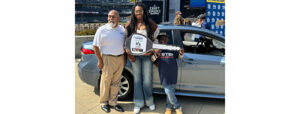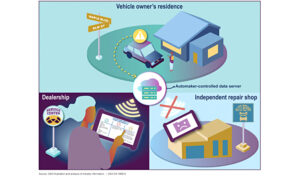Light trucks soared to 56 percent of light vehicles at mid-year 2020, up one-tenth in share over 2010
Fort Wayne, Ind.—As the car and light truck population climbed 14 percent across the U.S. between 2010 and 2020, the mix of light vehicles in operation (VIO) was undergoing even greater changes.
“While the domestic light truck VIO increased, the domestic car count plunged. At the same time, foreign nameplates soared by more than 47 million, and the number of domestic light vehicles imploded,” according to 2021 Lang Annual Report. “All this has significant consequences for the U.S. aftermarket today and for many years to come.”
A summary of the report’s findings are below.
Four Vehicle Groups
Light vehicles in operation (VIO) can be divided into four major groups: foreign and domestic cars, and foreign and domestic light trucks.
Fewer Cars
Cars (domestic and foreign nameplates) comprised 49 percent of light vehicles in operation during 2010, falling to 47 percent by 2015. At mid-year 2020, cars had sunk to only 44 percent of light vehicles across the U.S.
Surging Light Trucks
Light trucks (pickups, vans, SUVs, and CUVs) constituted 51 percent of total light vehicles in the U.S. at mid-year 2010. Over the next five years, the light truck share rapidly climbed, reaching 53 percent of the VIO by mid-year 2015.
Light trucks soared to 56 percent of light vehicles at mid-year 2020, up one-tenth in share over 2010.
Nameplate Shifts
While there were significant changes in the car and light truck mix between 2005 and 2020, the shift between foreign and domestic nameplates was even greater.
Domestic nameplate cars and light trucks constituted 62 percent of light vehicles in the U.S. at mid-year 2010, slipping to a 57 percent share in 2015. Domestic nameplates fell to just more than 50 percent of light vehicle population at mid-year 2020.
Surging Foreign Nameplates
Foreign nameplates (imports and transplants) rapidly expanded their vehicle population, climbing nearly one-third in VIO share between 2005 and 2015.
Foreign nameplates comprised 38 percent of light vehicles on U.S. roads during 2010, soaring to a 43 percent share at mid-year 2015. The foreign nameplate share has continued to increase, reaching nearly half of the light vehicle population at mid-year 2020.
Cars Versus Light Trucks
There were approximately 121 million cars in the U.S. at mid-year 2010, compared to 127 million light trucks.
At mid-year 2015, there were only 2 million more cars than 10 years earlier, while the light truck population soared by 10 million between 2010 and 2015. By 2020, the light truck VIO had reached 157 million compared to only 125 million passenger cars.
Nameplate Shift
The shift in domestic versus foreign nameplate light vehicles has been even more dramatic. There were 155 million domestic light vehicles on U.S. roads at mid-year 2010, compared to only 93 million foreign nameplates. Over the next five years, the domestic nameplate population declined by 7 million, while the foreign vehicle population climbed by more than 19 million.
60 Million Vehicle Spread
From 2010 to 2020, the domestic vehicle nameplate population in the U.S. fell by 13 million. At the same time, the foreign nameplate count surged by 47 million, a 60 million vehicle growth spread.
Foreign Nameplates Dominate VIO Growth
Foreign nameplates generated all of the light vehicle population growth between 2010 and 2020.
Although domestic light trucks averaged a 0.5 percent annual increase between 2010 and 2020, the 3.8 percent average annual plunge of domestic nameplate cars more than offset domestic nameplate light vehicle truck growth, reducing the overall domestic light vehicle population by more than 13 million.








Comments are closed.